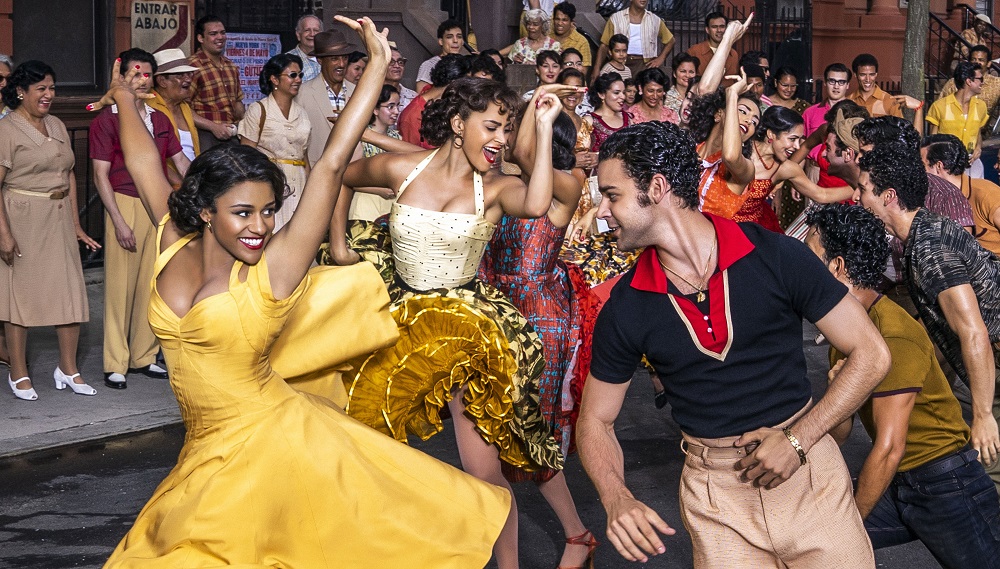
Among the many technical achievements of Steven Spielberg’s take on West Side Story is undoubtedly its showstopping choreography. Originally designed by legendary choreographer Jerome Robbins—for the stage and the screen—the tragic musical is well-known for revolutionizing how dance was presented, and how it was presented on screen.
Living up to the majesty of that original without simply rehashing it was no easy task, but Spielberg’s 2021 movie pulls it off thanks to the brilliant director of the New York City Ballet, Justin Peck. At just 34, the New York Times has variously called him “eminent,” a “virtuoso of the form,” and “the third most important choreographer” for ballet this century. Still, Peck had his work cut out for him, having to navigate the thicket of expectations for both originality and reverence.
Last week, we spoke to Peck about just how he pulled it off. As it turns out, Peck was a Robbins’ disciple from the start of his career, so working on this project was a coming home of sorts, as well as a dream come true, for the talented dancer. And read about what he has to say about a potential choreography Oscar.
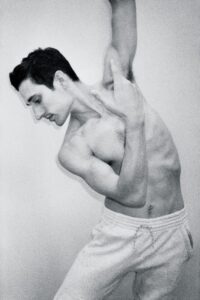
Below the Line: For those in the movie world that may not be familiar with who you are, tell us a bit about yourself.
Justin Peck: I’ve been the resident choreographer for the New York City Ballet since 2014. I’ve created over 40 dances for the stage. I choreographed the 2018 Broadway revival of Carousel. I started dancing as a kid after seeing a bunch of stuff on the stage in New York City. The original West Side Story film was actually a big influence on me as a young person, and a big part of my decision to devote my life to dance as an art form. I’ve been working as a choreographer for stage, for theater, and for film for a long while now. I’m very excited to get to jump between these mediums and create work.
BTL: How did you conceptualize this project in a way that is different from the stage to the screen, considering that you did not necessarily know what was going to make the final cut, or what shots they had?
Peck: That’s the great, fundamental question. What made this successful for me was how in-depth it was, the collaboration, between me, Steven Spielberg, and Tony Kushner, the book writer, and all the people that permeated from there. It started almost two years before we started filming—this film is a long time coming and we are so excited to share it finally. It began with a lot of brainstorming sessions, one on one with Steven Spielberg, and also moments with screenwriter Tony Kushner. We’d spend a lot of time listening to the music, reading the script, and talking a lot about how to bring it all to life in a visual sort of way. Choreography is a visual expression of art, so it was about finding the right kind of marriage between camera movement, physical movement through space, and the most dynamic ways to capture, and the most clear ways of telling the story, which has storytelling through dancing. That dates back to the very conception of West Side Story by Jerome Robbins, who was a choreographer and a storyteller. He was an innovator in his own right, he really moved the needle with West Side Story when it first came out, in terms of what dancing expression could be.
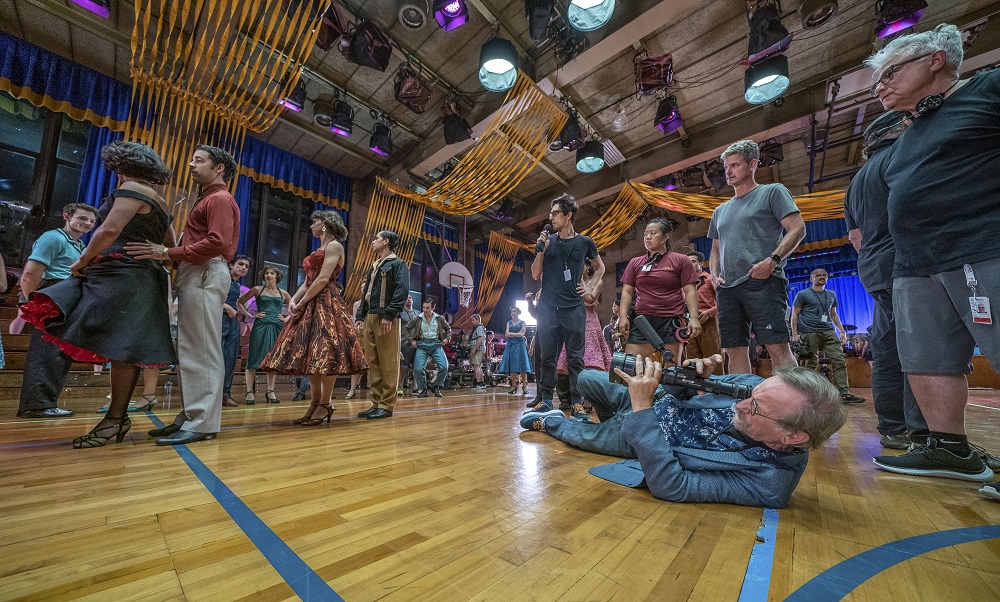
So, it was a very extensive process with Steven Spielberg. We would spend time where he would sketch out storyboards and we would walk through how to capture these moments on screen. The next step in the process was getting to the studio and building out the dances for the film, and then after that rehearsal. That process was collaboration with Steven again, to see how it could be captured through the lens. One of the biggest differences between live performances and film is that with film there is no proscenium, movement can happen anywhere, the camera angle can be from any direction, so the possibilities are sort of endless. It became about honing in a more precise plan for capturing this on film. It was very ambitious, challenging at times, it was exhilarating and a lot of fun.
BTL: One of the things I feared going into the movie was: “How are they going to do it that is different than pays homage?” But you did it. How much of the original did you want to keep and how much did you want to go in a different direction?
Peck: We all felt viewers would have certain expectations with seeing West Side Story, right? There are certain things that are so iconic about the original that have become part of almost the popular culture, and we knew that they would want to see things like the finger snaps, moments at the dance at the gym where Tony and Maria for the first time that is a very specific homage to the original. In the song ‘America’, where you see the Shark women foil their skirts, that was something Steven was very adamant about because it was also iconic to the original. It was about carefully selecting those elements to weave into our version. But we are also living, breathing artists in our own right, so we had to take, with the reverence and admiration for the original, our own creative voices into the process, and what we imagined. What gave me the courage to do that was Tony Kushner’s script, which sometimes put certain numbers into different contexts, which therefore required new storytelling, and certainly new choreography. That was exciting for me to work on.
The other thing I’ll say is that I revere Jerome Robbins. He is a huge personal hero of mine. I grew up studying his work, I danced quite a bit of his work when I was dancing professionally with the New York City Ballet. That was his home, too. He was one of the founders of New York City Ballet. When I was dancing there, I danced a bunch of his work and I was always so moved and enamored by it. His influence is definitely there, throughout my own work. It’s sort of like preparing my whole life for this project. It was a 15-year process of familiarizing myself with his work and being influenced by it. It felt like I could approach this organically and just know that his spirit would run through whatever it was that I was creating too.
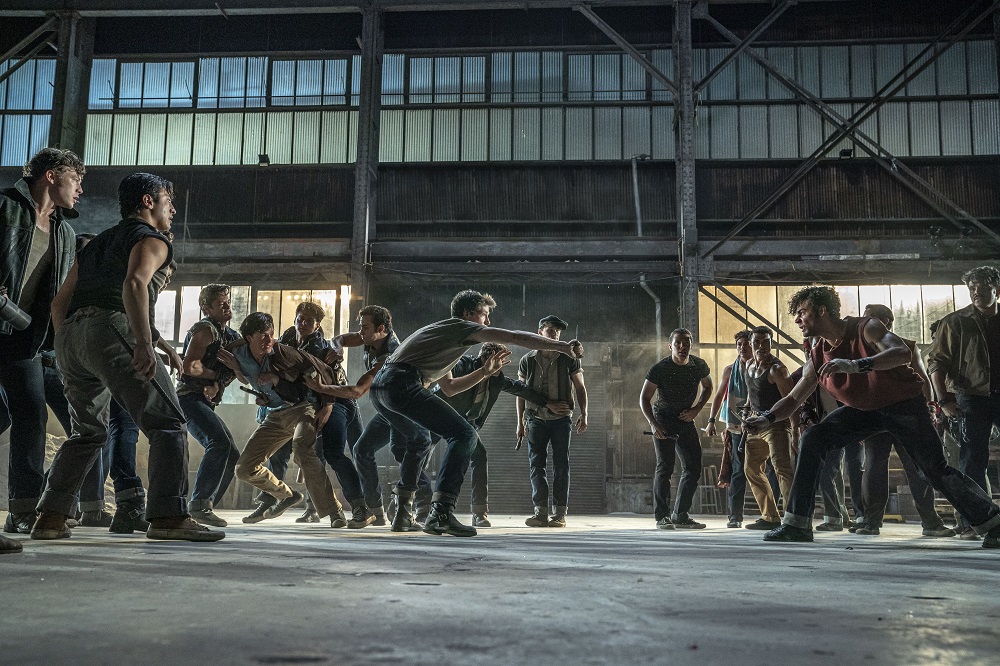
BTL: Let’s talk about “America.” Iconic dance sequence on the rooftop, at night, in both the original show and the movie. You changed that into a day scene, you gave it a new dynamic, where they walk through places and end up dancing on the street in traffic. Why?
Peck: First off, I think that this is one of the greatest dances in film numbers to ever be captured. It’s impossible to top. Immediately, we were like: “Ok, we can’t do something similar to that.” So we decided to take the viewer on a journey through Bernardo and Anita’s community. Setting in the morning during the daylight, the neighborhood would be animated, there would be more interactions taking place. The through-line of that is the debate between the two. And moments, when it gets heated and tense, are the moments when they burst into movement. That feels like a release but also a debate and interaction they’re having with one another, and it extends to the community at large. It was just one of those numbers where you go big or go home. It develops over five minutes from just the two of them and then expands to the entire neighborhood. It took us ten days to shoot, all over New York, Harlem, Queens, and Patterson, New Jersey. It was shot out of order. For some reason, it was always close to 100 degrees whenever we shot “America” outside. We sort of embraced it too, heat became the tone of the number. It was a thrilling number to work on. Seeing the film now in full sequence, it’s sort of the climax of the movie.
BTL: At one of the Q&As I attended, the principal cast explained that they did not know all the songs and moves ahead of it, they were learning as they were rehearsing. How did that work?
Peck: That’s a big part of the process—rehearsing to make sure the cast knows the singing part as well as the dancing parts as well as the blocking of these numbers. Part of what is so challenging and high-maintenance of movie musicals is all that preparation that is required for the construct of a movie musical, especially one like this that incorporates such a large cast that features a lot of dance sequences that run through it. We rehearsed for months before we got on sets for shooting, building it out as much as possible so that when we got to the stage there was no hesitation over the shooting or the block list.
Steven Spielberg is a director who is so brilliant that he can really work in the moment. He can arrive on set and decide, “Ok, this is where I’m going to put the camera, and this is how it’s going to move and this is what it’s saying.” But I think even for him, it was important to prepare for these big song and dance numbers because there was added dimension and layers to it. He was a big part of the preparation and the rehearsal process. Not only were we choreographing the material while the cast was learning the songs, but he was also in there rehearsing how the camera might move when we finally shot, through the sequence. Sometimes he used his iPhone to do test shots. His devotion to that is part of why this as a movie musical was successful.
BTL: Which was the hardest to choreograph and why?
Peck: That’s another good question. They’re all hard in their own way, but if I had to pick, I’d say “Cool.” At least from a technical standpoint. I think because the possibilities were sort of endless. Steven and the production designer Adam Stockhausen said they could build the set however I wanted, they said they could add obstacles wherever. Not only was there no traditional proscenium front to present to, but also no sense of the shape or space they were moving through, so we had to build up the number and break it down a large number of times before we got it to the right place. It was the only place to assess all the factors as to how to make this new version of “Cool.” It was already so radical in terms of how it is presented and where it is presented in the timeline. The original was flatter than what we did. A number like “Cool” was pulled directly from the stage version, almost identically. It definitely had a sense of presenting towards an audience. This from the get-go was built out to present towards the camera and just had a different construct to it.
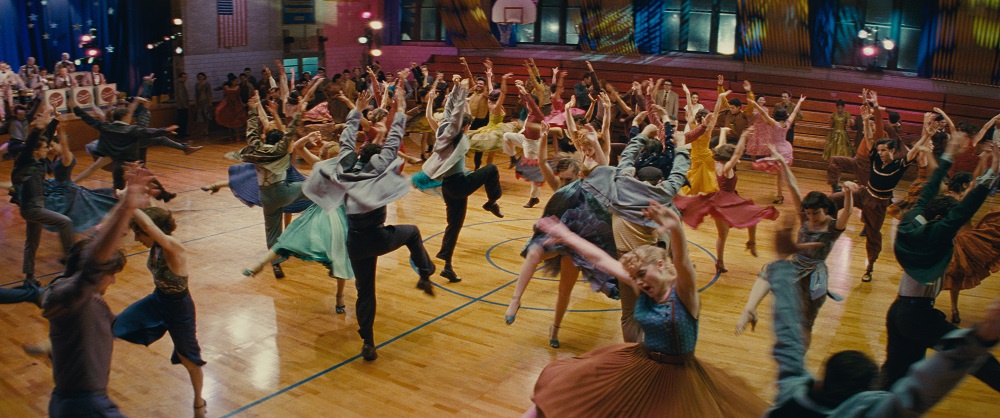
BTL: Did you attempt to have Rita Moreno dance?
Peck: Rita, Rita! She is a ball of energy. She was really game with some of the movements, she does not dance per se, but she moves a little bit in the number “Something’s Coming,” with Ansel Elgort who plays Tony. She was fully game with having him pick her up and loop her around. She turned 90—it’s amazing the level of energy she has and the performance she gives. She was a big ally for me. As an executive producer, she was present in the creation and was always a big advocate for the dance in the movie. She was supportive.
BTL: What are some of your favorite movie musicals that may have also inspired your work? And having done this, would you do more movie musicals and, if so, in what type?
Peck: A lot from the Golden Age of American cinema. Singing in the Rain, An American in Paris, Bandwagon. Anything [Bob] Fosse, including his films — Cabaret, All That Jazz. I would love to do an original movie musical. I would probably not do ballet, maybe something more relatable. But I certainly would want to work on something wholly original, bringing movement into the story.
BTL: What’s it been like talking about all these awards? There’s obviously no Oscar for choreography.
Peck: It’s super exciting and it’s an honor to get that kind of consideration. We are very proud of the film, so we are happy that others are responding so positively to it. I’m, of course, a little bit out of it for the reason you say. It would be great to have it, especially this year where there have been seven or eight movie musicals. It’s worthwhile considering having that Oscar because the choreography is integral to the storytelling process of those movies. It would be nice for the industry to acknowledge that as well.
West Side Story is now playing in theaters. All photos courtesy Disney and 20th Century Studios.





